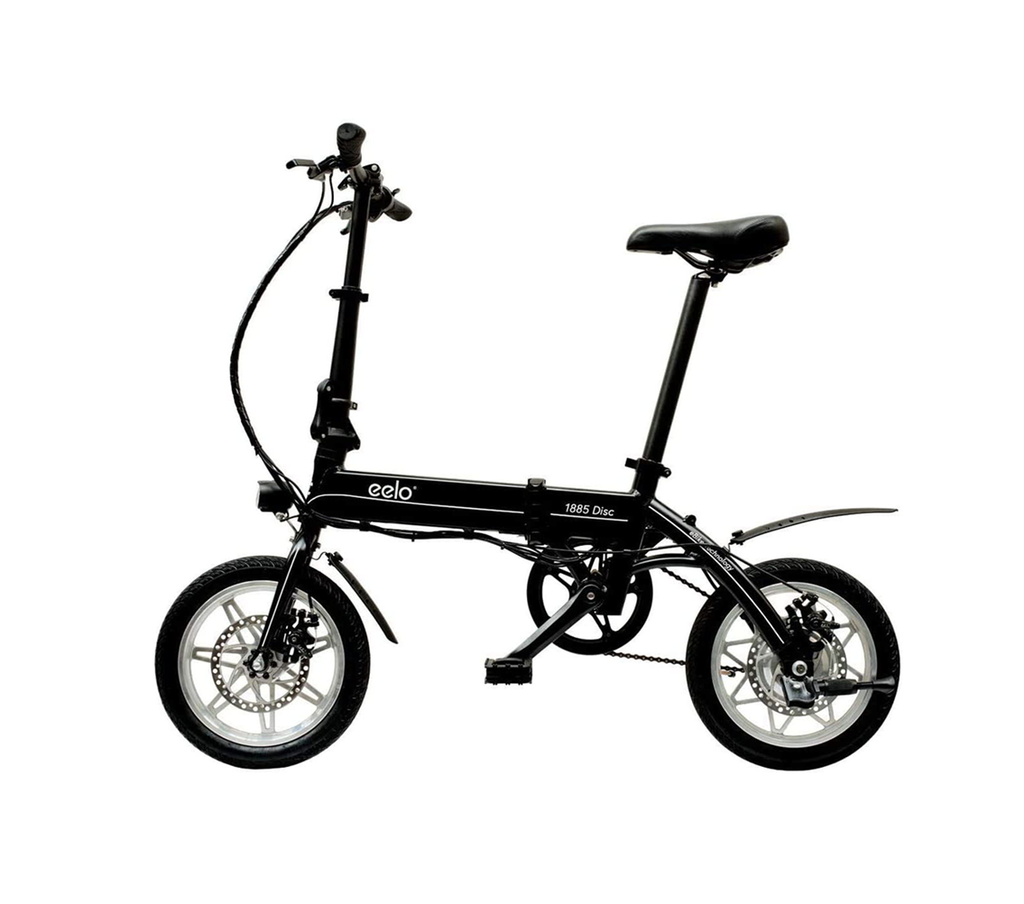In recent years, the conversation surrounding transportation and its environmental impact has gained significant traction. With growing concerns about climate change, individuals are increasingly seeking eco-friendly alternatives to traditional modes of transportation. One such alternative that has garnered attention is the electric bike. In this blog, we will examine the carbon impact of foldable electric bicycle versus traditional vehicles.

Understanding the Carbon Impact of Electric Bikes
Electric bikes, commonly known as e-bikes, have emerged as a sustainable mode of transportation with the potential to reduce carbon emissions. Unlike conventional vehicles that rely solely on fossil fuels, electric bikes are powered by rechargeable batteries, which can be charged using electricity from renewable sources such as solar or wind energy.
The carbon impact of electric bikes primarily depends on the source of electricity used for charging. In regions like the UK, where there is a significant push towards renewable energy, the carbon footprint of e-bikes tends to be considerably lower compared to traditional vehicles. This is because the UK's electricity grid has been gradually transitioning towards cleaner energy sources, resulting in reduced emissions associated with electricity generation.

Comparing Carbon Emissions: Electric Bikes vs. Traditional Vehicles
When comparing the carbon emissions of electric bikes to traditional vehicles, a comprehensive analysis reveals significant disparities favoring electric bikes. Taking a closer look at the numbers and statistics will reveal just how significant this difference is.
Lifecycle Emissions
Lifecycle emissions encompass the environmental impact associated with manufacturing, operation, and disposal of vehicles. According to studies conducted by the European Cyclists' Federation, the lifecycle emissions of electric bikes are substantially lower than those of traditional vehicles.
Manufacturing
Manufacturing an electric bike typically requires fewer raw materials and energy compared to manufacturing a traditional vehicle. For instance, producing an electric bike generates approximately 7.6 kilograms of CO2 emissions, whereas manufacturing a mid-sized car emits around 5.6 metric tons of CO2, according to research by the Union of Concerned Scientists. This stark contrast underscores the environmentally friendly nature of electric bikes from the outset.

Operation
During operation, electric bikes excel in emissions reduction due to their reliance on electric motors powered by rechargeable batteries. Unlike petrol or diesel-powered vehicles, electric bikes produce zero tailpipe emissions, thereby mitigating air pollution and greenhouse gas emissions. In the UK, where air quality is a pressing concern in urban areas, the adoption of electric bikes offers a tangible solution for combating pollution.
To illustrate, consider this: a typical petrol-powered car emits approximately 4.6 metric tons of CO2 annually, while an electric bike produces virtually zero emissions during operation, as reported by the International Council on Clean Transportation. Extrapolating these figures to a city-wide scale, the potential for emissions reduction becomes evident.
Disposal
In terms of disposal, electric bikes also present an advantage over traditional vehicles. Electric bike batteries can be recycled, minimising the environmental impact of their disposal compared to the complex and often polluting process of disposing of automotive components.
Promoting Sustainable Transportation
Furthermore, in densely populated urban areas like many cities in the UK, electric bikes offer an advantage in terms of reducing congestion and air pollution. By promoting cycling as a mode of transportation, e-bikes contribute to improved air quality and reduced greenhouse gas emissions.
In London alone, for example, the Mayor's Transport Strategy aims to increase the proportion of trips made by walking, cycling, and public transport to 80% by 2041. Electric bikes play a crucial role in achieving this goal by providing a sustainable alternative to traditional vehicles, particularly for short to medium-distance journeys.
Encouraging Adoption through Policy Support
The transition to electric bikes is further facilitated by supportive policies and initiatives implemented by the UK government. Through grants and subsidies, the government incentivizes individuals to invest in electric bikes, thereby lowering financial barriers to adoption. For instance, the UK's Plug-In Grant provides financial assistance to individuals purchasing electric bikes, making them more accessible to a wider demographic.
Moreover, the government's commitment to enhancing cycling infrastructure, including dedicated bike lanes and secure parking facilities, reinforces the attractiveness of electric bikes as a viable mode of transportation. By creating a conducive environment for cycling, policymakers aim to encourage more people to embrace e-bikes as a sustainable alternative to traditional vehicles.
Public Awareness and Education
Public awareness and education campaigns play a crucial role in promoting the benefits of electric bikes and encouraging their widespread adoption. Through targeted initiatives and outreach programs, stakeholders aim to dispel myths and misconceptions surrounding e-bikes while highlighting their environmental and health benefits.
By engaging with communities, advocating for safe cycling practices, and showcasing the practicality of electric bikes in everyday life, these campaigns seek to inspire individuals to make the switch to eco-friendly transportation options. In doing so, they contribute to shifting cultural norms towards sustainable mobility and fostering a greener mindset among the populace.
Collaborative Efforts for Sustainable Mobility
Ultimately, the transition to electric bikes requires collaborative efforts from various stakeholders, including governments, businesses, advocacy groups, and individuals. By working together to overcome barriers to adoption, such as infrastructure limitations and technological advancements, stakeholders can accelerate the uptake of electric bikes and realize their full potential in reducing carbon emissions.
Through partnerships, knowledge sharing, and innovative solutions, the collective effort towards sustainable mobility can pave the way for a cleaner, healthier future. By embracing electric bikes as a key component of the transportation landscape, the UK can lead by example in addressing the climate crisis and building a more resilient, sustainable society for generations to come.

Conclusion
In conclusion, the carbon impact of electric bikes compared to traditional vehicles highlights the potential of e-bikes as a sustainable mode of transportation in the UK. With their lower lifecycle emissions and promotion of clean energy usage, electric bikes offer a promising solution to reduce carbon emissions from transportation.
As individuals and policymakers alike continue to prioritize environmental sustainability, the adoption of electric bikes can play a significant role in mitigating climate change and creating healthier, more sustainable communities. By embracing e-bikes as a viable alternative to traditional vehicles, we can pave the way towards a greener and more sustainable future for generations to come.
Please contact us promptly if you are considering purchasing a new folding e-bike but are still deciding which type to buy. Happy riding!

